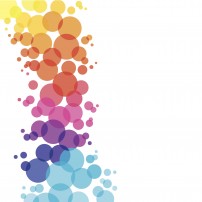We’ve recently discussed the power of color in presentation design, which includes the concept of color psychology. In brief, it studies the influence of color on human behavior. For instance, studies have shown that customers make judgment on a product within 90 seconds, and 62-90% of their judgement is due to color. But when did we start asking these questions? How did we come to the conclusion that all airports should be filled with blue and all pizza places should be doused in red?
Isaac Newton: Does He Really Know Everything?
No one can dispute that in the late 1660’s, Sir Isaac Newton discovered how the color spectrum is organized and composed. But the psychology of color dates back thousands of years, to Egyptians who studied their effect on mood and used them to accomplish holistic benefits. For example:
Red – Increases circulation and stimulates the body and mind.
Yellow – Purifies the body and helps the nerves.
Orange – Used to increase energy.
Blue – Soothed pain.
Purple – Helped with skin problems.
Black – Life and rebirth.
Considering how often blue is still used as a “soothing” color and orange represents “energy” today, it’s not hard to imagine that these associations are cultural as well as psychological.
Carl Jung: A Man Of Many Colors
 The development of modern psychology also opened up the study of color specifically, which has since been used for marketing, architectural design, and more. One prominent researcher in the field was Swiss psychiatrist Carl Jung (1875-1961), who is quoted saying: “colors are the mother tongue of the subconscious.” His studies led him to develop art therapy, as he believed that expressing oneself through images and colors could help patients recover from trauma or distress. He connected our cultural perceptions with the idea that we have a universal, bodily response to color stimulus.
The development of modern psychology also opened up the study of color specifically, which has since been used for marketing, architectural design, and more. One prominent researcher in the field was Swiss psychiatrist Carl Jung (1875-1961), who is quoted saying: “colors are the mother tongue of the subconscious.” His studies led him to develop art therapy, as he believed that expressing oneself through images and colors could help patients recover from trauma or distress. He connected our cultural perceptions with the idea that we have a universal, bodily response to color stimulus.
Color Psychology Today
Many studies about color psychology are anecdotal, because preferences for certain shades and responses that rely on “feeling” are difficult to measure. For instance, one study found that 35% of Americans prefer the color blue, 16% preferred green, 10% purple, and 9% red. Marketers often develop logos, stores, and packaging based on the results of similar studies. Even at Ethos3, we are probably unknowingly guilty of choosing our favorite colors for presentation design.
“Color Emotion Guides” are other ways that brands incorporate color associations today, which is not especially different from our Egyptian ancestors. We might not be trying to heal a chest cold by painting our rooms blue, but we certainly understand that people prefer certain shades, and those shades are worth discovering through color psychology.
Question: What is your favorite color?
